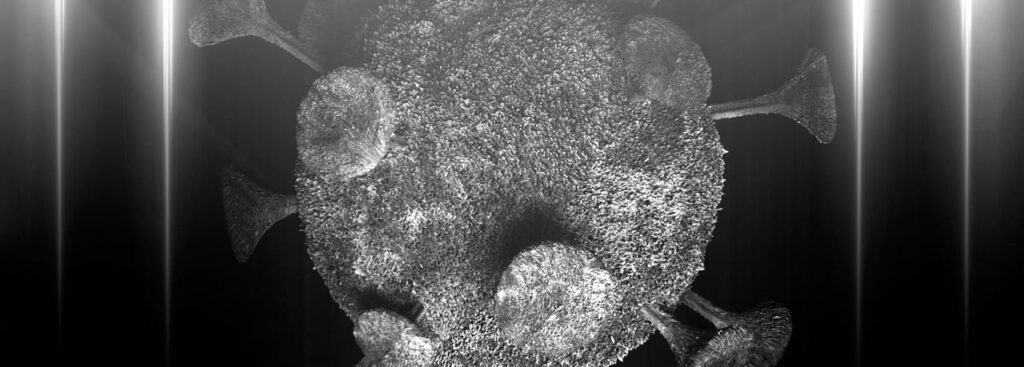- There is still a lot we don't know about covid-19
- Our bodies are full of bacteria and germs
- SARS and MERS gave researchers an insight into respiratory viruses
- Vaccination gives the body a prompt to deal with unknown viruses
- Our audio narration of this column is included at the end of the text!
Above: Vaccination. Photo by Andrey Popov/DepositPhotos.
BitDepth#1305 for July 10, 2021
It might be disturbing to know, but at the best of times, in the flush of good health, our bodies are teeming with germs and bacteria, most of which are essential to maintaining the balance that’s necessary for human health.
This balance is delicate and continuously managed, but sometimes it goes wrong, most notably in the various forms of cancer, growths in the body that have gone quietly crazy, before proceeding to spread deadly mutations of itself throughout the body.
Most of your immune systems time is spent dealing with unwanted germs, parasites, fungus and viruses, from the common cold to covi-19.
These unwelcome invaders are collectively called pathogens, and the body is constantly looking out for a protein in their mass called antigens, which trigger the formation of antibodies, your immune system’s response to the threat.
All this happens without anyone being more aware of it than the muscles that make the heart beat or lungs expand.
Most uncompromised immune systems are full of information gathered throughout your life about the pathogens you have encountered, because the ability to identify and act on new antigens is built into the memory cells of the body.
But it wasn’t Panadol or cough syrup that responded to the pathogens, they just treat the symptoms of illness.
The work was done your antibodies, learning as they went along about how to deal with new variants of such regular party crashers as a new minor flu or cold.
There are more than 200 virus families that are known to cause the common cold and chances are you haven’t been exposed to even half of them yet.
Which brings us to covid-19, which earned the name the novel coronavirus when it was discovered in 2019.
When this highly infectious disease began blazing through the population of Wuhan in China, nobody knew anything about it.
Eighteen months later, having invested hundreds of thousands of man-hours worth of study, there is still a lot we don’t know.
In 2003, the outbreak of Severe Acute Respiratory Syndrome (SARS) in China began the research into deadly, airborne, highly infectious diseases. Officially, covid-19 is known as SARS-CoV-2.
Middle East Respiratory Syndrome (MERS) arrived in 2019 from the Arabian Peninsula, accelerating further study into a deadly new strain of infections.

The investigation into SARS was another head start into understanding how covid19 works and enabled more effective work on today’s vaccines.
AstraZeneca and Johnson and Johnson vaccines use adenovirus-vectored technology. The AstraZeneca serum piggybacks a gene from covid-19 on a harmless common cold virus to trigger antibody production.
Pfizer -BioNTech and Moderna use mRNA technology, which uses a genetic code that tricks the body into producing antibodies.
Vaccines trigger symptoms as the body responds to phantom illnesses, but the payoff is an immune system that’s primed to respond to a real covid19 infection.
Vaccination is necessary and sensible, but it won’t be a magic bullet. The defense against covid19 will demand multiple strategies, sustained until the virus joins smallpox and polio in medical history.
Neither of those viruses mutated as easily as covid19 and inspired a global vaccination drive to eradicate them.
Even so, Jonas Salk’s polio vaccine was introduced in 1955 and preventive vaccination continues to this day.
Edward Jenner’s smallpox immunisation was first administered in 1796, but it wasn’t until 1980 that the variola virus was considered eradicated.
The next challenge will be in dealing with the variants of concern, the significant mutations of covid19, particularly those that emerged from Indian (B.1.617) and South African (B.1.351) pandemic spread. The UK variant (B.1.1.7) is said to be both more infectious and even deadlier while the B.1.617 variant, now renamed covid-19 Delta, is the dominant strain in the UK because of how contagious it has evolved to become.
On Wednesday, PAHO Director Carissa F Etienne warned that, “If current trends continue, the health, social and economic disparities in our region will grow even larger, and it will be years before we control this virus in the Americas.”
According to Etienne, in Central America, only 2 million people have been fully vaccinated; in the Caribbean, less than 3 million. In some countries, including Guatemala, Trinidad and Tobago, and Honduras, not even 1% of the population has been vaccinated.
By comparison, despite a late start, the US has fully vaccinated 40 percent of its population.
The worst variants also make it difficult to predict when herd immunity will become a reality with covid-19 in Trinidad and Tobago, because neutralising their spread with vaccines is difficult.
Back to normal, even with vaccination, may include masks and social distancing for those who can’t get vaccinated for medical or philosophical reasons for some time yet.
These variants point to a long battle with covid-19 and the possibility that regular booster vaccination and a variation of existing restrictions will be part of our daily lives for months, if not years to come.


